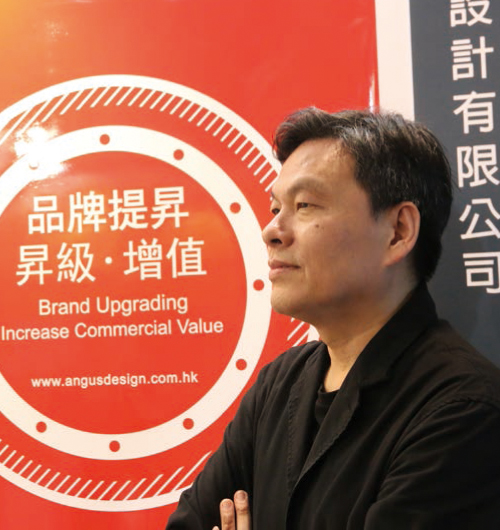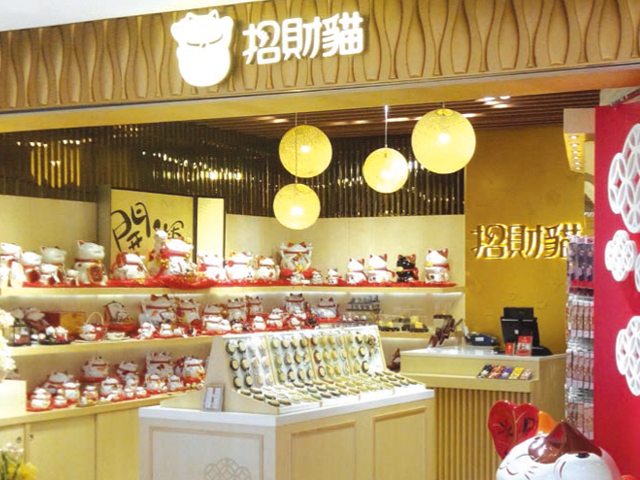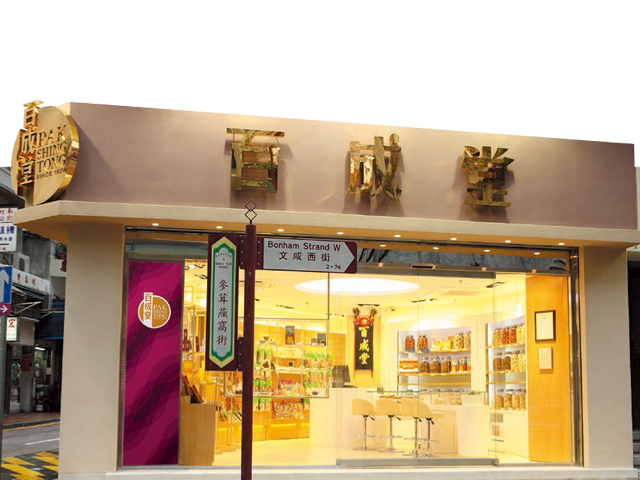Brand design involves professional knowledge and specialists’ know-how. To build a strong foothold in the market, meticulous planning must be taken care of in every aspect: as minute as the design of a brand logo, product packaging and as grand as store front decoration and brand image.
According to Angus Wong, renowned Hong Kong brand strategist, “Brand design is not a rescue model that emerges after a crisis. Instead, it is a long-term plan for the brand as a whole.” Although the Mainland has witnessed rapid economic development, not many companies dare to tap into this vast market. Wong travels much between Hong Kong and the Mainland. He agrees that the Mainland market is not one that can be entered in haste. Companies must be very well-prepared to hit their targets.
Teaming up with local employees
 Noting the cultural difference between the Mainland and Hong Kong, Wong reckoned that getting locals on board of the team is of utmost importance. They are familiar with what the market demands and how it runs. Technical issues relating to law, such as licensing, can be dealt with much more easily. Wong shared that “different markets in different parts of China feature very different characters. If first or second tier cities seem too difficult, third and fourth tier ones may be a good starting point.”
Noting the cultural difference between the Mainland and Hong Kong, Wong reckoned that getting locals on board of the team is of utmost importance. They are familiar with what the market demands and how it runs. Technical issues relating to law, such as licensing, can be dealt with much more easily. Wong shared that “different markets in different parts of China feature very different characters. If first or second tier cities seem too difficult, third and fourth tier ones may be a good starting point.”
Brands that successfully tapped into the Mainland market
Wong quoted Monbo Wonton of Shenyang as an example. Monbo first underscored the corporate core values of “authenticity” and “warmth” to optimize the shop front and logo design, etc. It was then followed by developing a delivery service for frozen wontons, which was promoted with an illustrated comic. Thanks to the presence-generating strategy, the customer base was extended beyond Shenyang before the brand physically arrived at another location.
He further said, “The name of Monbo Wonton was heard and known by some customers before they have seen the actual shop; some had even tasted their products and used their services. When the brick and mortar shop lands on a target city, both the time and costs for promotion can be saved. Furthermore, products that complement the theme of the brand can also be rolled out to form an industrial chain, so that an originally unidirectional development path can grow systematically.” This year, the wonton shop successfully went south and opened a branch in Shenzhen.
“Fortune Cat”, on the other hand, is a Hong Kong brand that made its name in the Mainland market after undergoing the brand design of Angus Wong. Wong turned the concept of “dreams come true” behind the auspicious cat into a "go-to" gift. A small store that was set up to specialize in pottery fortune cat decorations and gifts is now transformed into a mid-high end gift boutique with branches in Hong Kong, the Mainland and Taiwan.
Brand image established from point to plane
 Competition amongst brands is ever more heated. In light of the cutthroat competition, Wong pointed out that the key to victory lies on the ability to predict future habits. "We have to stay at the forefront of the market with our corporate clients, and constantly adjust ourselves in response to the changes.”
Competition amongst brands is ever more heated. In light of the cutthroat competition, Wong pointed out that the key to victory lies on the ability to predict future habits. "We have to stay at the forefront of the market with our corporate clients, and constantly adjust ourselves in response to the changes.”
Yet, many companies do not have a clue of where to get started when they want to upgrade their brands. Wong suggests starting by asking two questions: What are you selling? What is your selling point? “By posing these questions, companies can find out what the most profitable aspects in their businesses are. That is where brand upgrading should start from. Take for example cell phones. The strengths and weaknesses of the product should be first analyzed to identify the selling points. The next step is to launch accessories related to the phone and gradually build a culture that belongs to the brand.
Bringing innovation to the brand culture helps retain the customer base that can grow into a circle of fans. The image and tastes embedded in the brand can be built with the identities and social status of this group of customers. Wong said, “This is a point-to-plane transformation which slowly grows the brand to a big verdant tree.”
Physical store complements e-commerce
With internet stores and online shopping being all the rage, there are countless electronic merchants on WeChat. Yet, Wong believes that, the “battlefield”, after all, goes back to the competition amongst physical shops. The combination of brick and mortar shops with online marketing is the way to go for today’s brands. Wong called on leadership of companies to have confidence in their products and services, a long-term approach that lasts five to ten years and dogged determination.
Wong stressed the importance of determination. “If a company is not adequately determined, efforts could be easily wasted. The leadership of a company must know about developing the brand image as well as protecting the company’s intellectual property when they offer direction for the team. To really get control of the future, they must also consider market trends.”
Brand success depends on trilateral cooperation
 Having worked in brand strategies for a very long time, Wong said, “It takes much more than one designer’s efforts behind each successful case, each of which is the joint outcome of the designer, the brand strategist and the corporate leaders.”
Having worked in brand strategies for a very long time, Wong said, “It takes much more than one designer’s efforts behind each successful case, each of which is the joint outcome of the designer, the brand strategist and the corporate leaders.”
He understood that certain companies could be anxious about the abandonment of traditions as a brand undergoes transformation. Yet, he emphasized that the essence of brand design lies on “breakthrough” – breaking through the problems of a company instead of breaking away from traditions. Last but not least, Wong concluded with the example of a century-old local herbalist Pak Shing Tong. The main axis of upkeeping holistic well-being through nourishment runs through the whole brand reform project of Pak Shing Tong. This direction does not only preserve traditional values, but also incorporates elements of East meets West, which corresponds to the current development trend of proprietary Chinese medicine, giving new vitality to the century-old brand.




